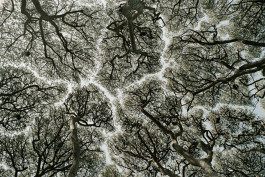
Gesellschaft (society) is part of a series on a group of pines that I have repeatedly photographed since 1997. The photographs have not been manipulated in any way.
What is striking about these trees is the mysterious ways the treetops keep their distance from one another. They appear simply to stop once they have achieved a certain point. What keeps them from touching their neighboring trees? It was the first time I had ever witnessed this rare phenomenon. This condition, also known as “crown shyness,” is extremely uncommon. To date, there is no explanation for why the crowns keep their distance from one another—only hypotheses.
Life is a sophisticated form of coexistence. The conditions are highly complex, varying, demanding, and difficult to explain. Plants, like us, are part of the fragile system that we know as “nature.”
BN 1997/2014

Society
group of pines, color photographs, Cibachrome prints, series from 1997–2019
Photos: Barbara Nemitz
© Barbara Nemitz and VG Bildkunst, Bonn

Society
group of pines, color photographs, Cibachrome prints, series from 1997–2019
Photos: Barbara Nemitz
© Barbara Nemitz and VG Bildkunst, Bonn
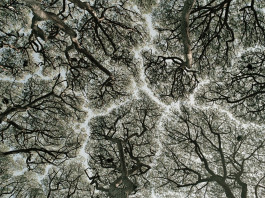
Society
group of pines, color photographs, Cibachrome prints, series from 1997–2019
Photos: Barbara Nemitz
© Barbara Nemitz and VG Bildkunst, Bonn
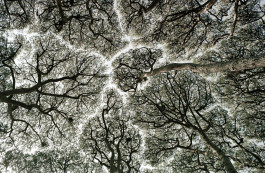
Society
group of pines, color photographs, Cibachrome prints, series from 1997–2019
Photos: Barbara Nemitz
© Barbara Nemitz and VG Bildkunst, Bonn
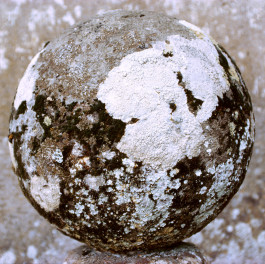
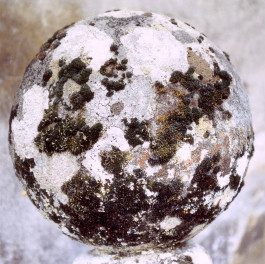
Wachsen I (Grow)
Cibachrome print on aluminum under plexiglass, 135 x 135 cm, 1993/96
Photo: Barbara Nemitz
© Barbara Nemitz and VG Bildkunst, Bonn
Wachsen II (Grow)
Cibachrome print on aluminum under plexiglass, 135 x 135 cm, 1993/96
Photo: Barbara Nemitz
© Barbara Nemitz and VG Bildkunst, Bonn
Wachsen (grow)
The photographs show sixteenth-century stone spheres covered in lichens and moss. Even though we may not know their exact age, we can sense that these forms tell of temporal dimensions different other than the ones we perceive in our own lives.
From an evolutionary point of view, lichens represent a very early form of vegetation. They grow extremely slowly, and they can live to a very old age. Like a scab, the papery, rampant mass has spread out across the surface. The solid, light grey, immovable substance itself appears to have “turned into stone.”
The bizarre and diverse forms of the under- and overlying layers comprise a living organism. The lichen-covered stone forms are reminiscent of planets that lead us to ponder other possible forms of continental divide.
Exhibition:
Barbara Nemitz – Living the Beautiful, Kunstverein Heidelberg, 1997, catalog
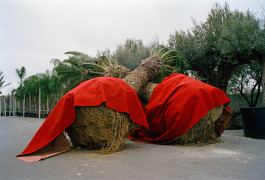
Palms with Red Carpet
Cibachrome print under plexiglass, 120 x 177 cm, 1999
Exhibition: La Bauhaus si muove!, Chiesa di San Paolo, Associazione culturale LaRete, Modena, Italy, catalog
Photo: Barbara Nemitz
© Barbara Nemitz and VG Bildkunst, Bonn

Vegetation is the Fur of the Landscape
b/w photographs, series, 2000
Trans|Plant presentation, Künstlerhaus Bethanien, Berlin 2000
Photos: Barbara Nemitz
© Barbara Nemitz and VG Bildkunst, Bonn
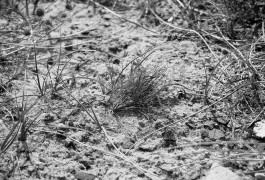
Vegetation is the Fur of the Landscape
b/w photographs, series, 2000
Trans|Plant presentation, Künstlerhaus Bethanien, Berlin 2000
Photos: Barbara Nemitz
© Barbara Nemitz and VG Bildkunst, Bonn
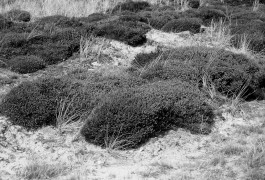
Vegetation is the Fur of the Landscape
b/w photographs, series, 2000
Trans|Plant presentation, Künstlerhaus Bethanien, Berlin 2000
Photos: Barbara Nemitz
© Barbara Nemitz and VG Bildkunst, Bonn
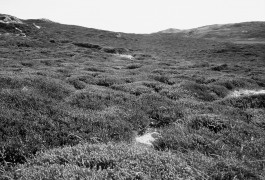
Vegetation is the Fur of the Landscape
b/w photographs, series, 2000
Trans|Plant presentation, Künstlerhaus Bethanien, Berlin 2000
Photos: Barbara Nemitz
© Barbara Nemitz and VG Bildkunst, Bonn
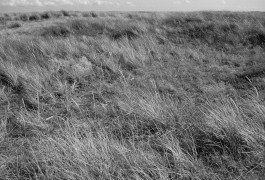
Vegetation is the Fur of the Landscape
b/w photographs, series, 2000
Trans|Plant presentation, Künstlerhaus Bethanien, Berlin 2000
Photos: Barbara Nemitz
© Barbara Nemitz and VG Bildkunst, Bonn
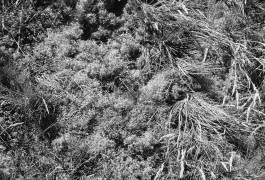
Vegetation is the Fur of the Landscape
b/w photographs, series, 2000
Trans|Plant presentation, Künstlerhaus Bethanien, Berlin 2000
Photos: Barbara Nemitz
© Barbara Nemitz and VG Bildkunst, Bonn

Vegetation is the Fur of the Landscape
b/w photographs, series, 2000
Trans|Plant presentation, Künstlerhaus Bethanien, Berlin 2000
Photos: Barbara Nemitz
© Barbara Nemitz and VG Bildkunst, Bonn

Gesellschaft (society) is part of a series on a group of pines that I have repeatedly photographed since 1997. The photographs have not been manipulated in any way.
What is striking about these trees is the mysterious ways the treetops keep their distance from one another. They appear simply to stop once they have achieved a certain point. What keeps them from touching their neighboring trees? It was the first time I had ever witnessed this rare phenomenon. This condition, also known as “crown shyness,” is extremely uncommon. To date, there is no explanation for why the crowns keep their distance from one another—only hypotheses.
Life is a sophisticated form of coexistence. The conditions are highly complex, varying, demanding, and difficult to explain. Plants, like us, are part of the fragile system that we know as “nature.”
BN 1997/2014

Society
group of pines, color photographs, Cibachrome prints, series from 1997–2019
Photos: Barbara Nemitz
© Barbara Nemitz and VG Bildkunst, Bonn

Society
group of pines, color photographs, Cibachrome prints, series from 1997–2019
Photos: Barbara Nemitz
© Barbara Nemitz and VG Bildkunst, Bonn

Society
group of pines, color photographs, Cibachrome prints, series from 1997–2019
Photos: Barbara Nemitz
© Barbara Nemitz and VG Bildkunst, Bonn

Society
group of pines, color photographs, Cibachrome prints, series from 1997–2019
Photos: Barbara Nemitz
© Barbara Nemitz and VG Bildkunst, Bonn
Wachsen (grow)
The photographs show sixteenth-century stone spheres covered in lichens and moss. Even though we may not know their exact age, we can sense that these forms tell of temporal dimensions different other than the ones we perceive in our own lives.
From an evolutionary point of view, lichens represent a very early form of vegetation. They grow extremely slowly, and they can live to a very old age. Like a scab, the papery, rampant mass has spread out across the surface. The solid, light grey, immovable substance itself appears to have “turned into stone.”
The bizarre and diverse forms of the under- and overlying layers comprise a living organism. The lichen-covered stone forms are reminiscent of planets that lead us to ponder other possible forms of continental divide.

Wachsen I (Grow)
Cibachrome print on aluminum under plexiglass, 135 x 135 cm, 1993/96
Photo: Barbara Nemitz
© Barbara Nemitz and VG Bildkunst, Bonn

Wachsen II (Grow)
Cibachrome print on aluminum under plexiglass, 135 x 135 cm, 1993/96
Photo: Barbara Nemitz
© Barbara Nemitz and VG Bildkunst, Bonn

Palms with Red Carpet
Cibachrome print under plexiglass, 120 x 177 cm, 1999
Exhibition: La Bauhaus si muove!, Chiesa di San Paolo, Associazione culturale LaRete, Modena, Italy, catalog
Photo: Barbara Nemitz
© Barbara Nemitz and VG Bildkunst, Bonn

Vegetation is the Fur of the Landscape
b/w photographs, series, 2000
Trans|Plant presentation, Künstlerhaus Bethanien, Berlin 2000
Photos: Barbara Nemitz
© Barbara Nemitz and VG Bildkunst, Bonn

Vegetation ist der Pelz der Landschaft
SW-Fotografien, Serie, 2000
Foto: Barbara Nemitz
© Copyright Barbara Nemitz und VG Bildkunst, Bonn


Vegetation ist der Pelz der Landschaft
SW-Fotografien, Serie, 2000
Foto: Barbara Nemitz
© Copyright Barbara Nemitz und VG Bildkunst, Bonn
Vegetation ist der Pelz der Landschaft
SW-Fotografien, Serie, 2000
Foto: Barbara Nemitz
© Copyright Barbara Nemitz und VG Bildkunst, Bonn

Vegetation ist der Pelz der Landschaft
SW-Fotografien, Serie, 2000
Foto: Barbara Nemitz
© Copyright Barbara Nemitz und VG Bildkunst, Bonn

Vegetation ist der Pelz der Landschaft
SW-Fotografien, Serie, 2000
Foto: Barbara Nemitz
© Copyright Barbara Nemitz und VG Bildkunst, Bonn

Vegetation ist der Pelz der Landschaft
SW-Fotografien, Serie, 2000
Foto: Barbara Nemitz
© Copyright Barbara Nemitz und VG Bildkunst, Bonn
© Copyright 2025
Barbara Nemitz and VG Bildkunst, Bonn
© Copyright 2025
Barbara Nemitz und VG Bildkunst, Bonn